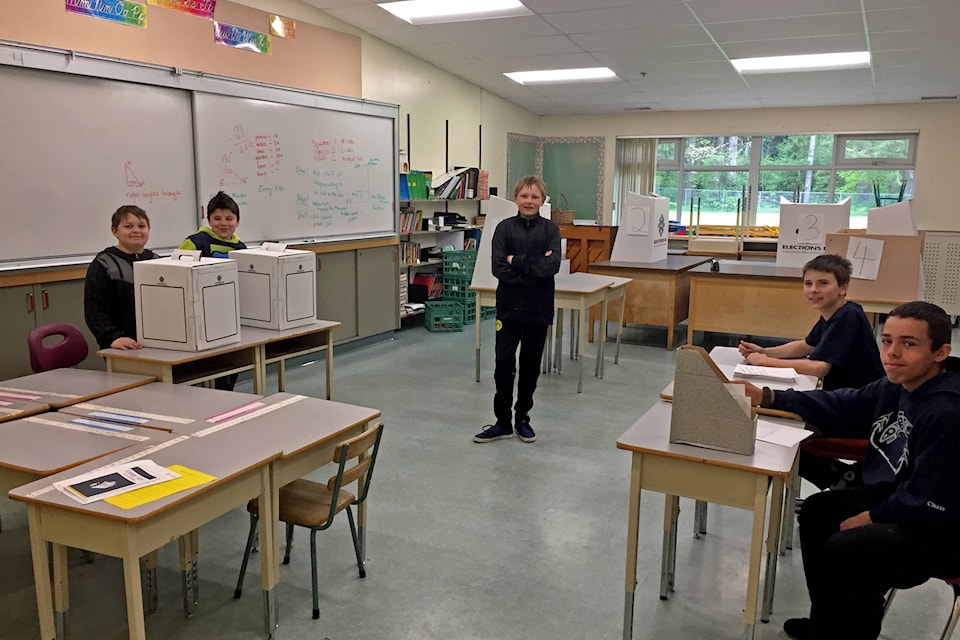Students from Hope Secondary School (HSS), Silver Creek Elementary (SCES) and Coquihalla Elementary participated in mock elections just before the May 9 election.
Hosted by CIVIX, a civic education charity, the Student Vote campaign walked students through the process of an election with their teachers like SCES’s Grade 6-7 teacher Catina Carpenter.
Carpenter took students through a lesson plan, learning about the electoral system, the different parties, researching local candidates and the process of voting. Finally, students nominated themselves to function as part of a polling station. Students from grades 3 to 7 could participate in the vote.
“Each teacher addressed it in a different manner, some people brought in newspaper articles,” said Carpenter. “I let the kids do the research on their own.”
Asked whether her students could understand the politics that each candidate stood for, Carpenter said they could “to some degree.”
“The kids had their own ideas of what was most important,” said Carpenter. “It was interesting that it was very much similar to what adults are concerned about in this election.
“I think there’s probably a lot of conversations going on in the home.”
Carpenter said her students felt concerned about health care and the school playground.
“We had quite a few conversations about our school playground,” said Carpenter. “A lot of the kids were concerned about where funding goes for education and community recreation.”
Over at HSS, teacher Ahlbert Dayrit played Carpenter’s role to his students, who are a few years older. The Standard talked to Dayrit’s Grade 10 class, and while not everyone could point to issues they felt concerned about, all of them sensed the gravity of their votes.
“A little bit nerve-wracking, but not really, because it wasn’t real, but it was kind of cool to experience how it’s going to be later on,” said Jennifer Pietsch, 15.
Just like Jennifer, Fraser Hollmann, 15, felt nervous when he voted for the first time. “I didn’t know what to do,” he said.
He voted based on whomever would help him in his future.
“I wanted to be a teacher, so I looked for pro-union parties — the NDP,” he said.
For classmate Kristen Feltren, 16, childcare and funding of schools concerned her the most.
Camryn Ogren, 15, echoed Jennifer’s feelings that this gave her a good learning experience. Camryn said her vote was influenced by who campaigned the most.
“I didn’t hear as much about the Liberals and the NDP as much as I do with the Greens,” said Camryn.
Camryn said she saw BC Green Party candidate Arthur Green’s name often on social media and more signs on town streets.
“So, it makes you want to learn more about him because you’re seeing him everywhere,” she said.
In fact, Green would have won in the mock elections in Fraser-Nicola, where he received 337 out of 869 votes. NDP candidate Harry Lali would come in second, receiving 314 votes.
The NDP would form government, taking 60 seats, while the Greens would have 14 and the Liberals only 12. They would receive 39.0, 28.5 and 25.4 per cent of the vote respectively.
Coquihalla Elementary School voted the most, with 138 ballots placed.
